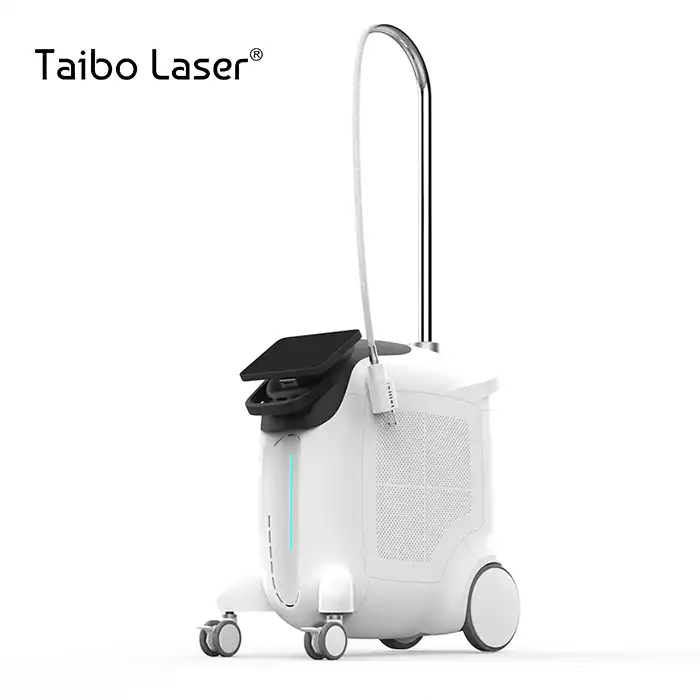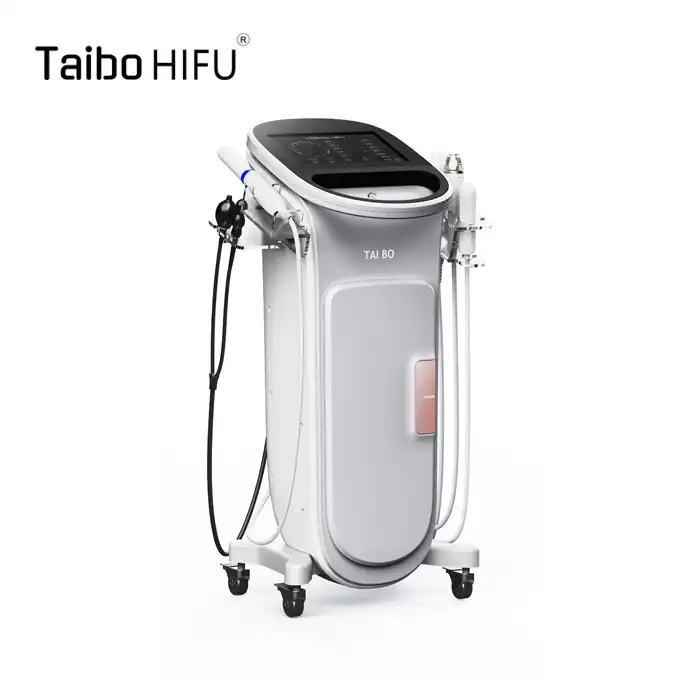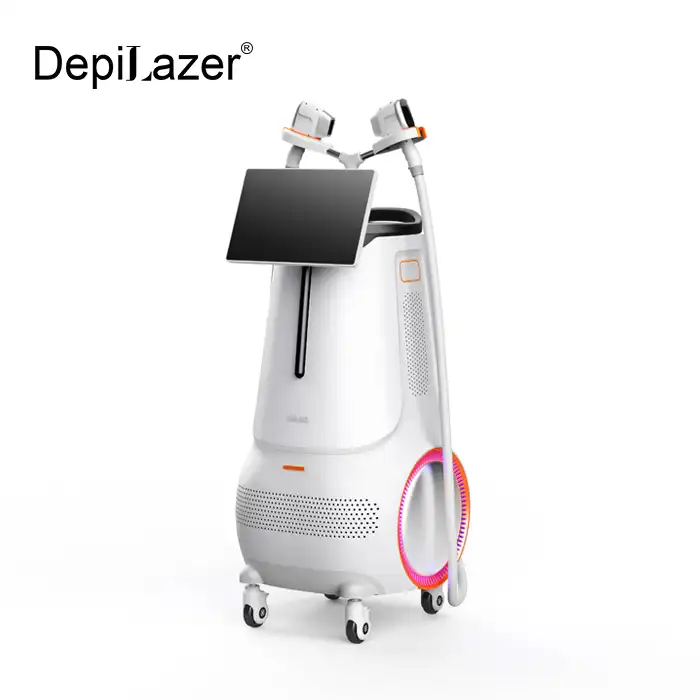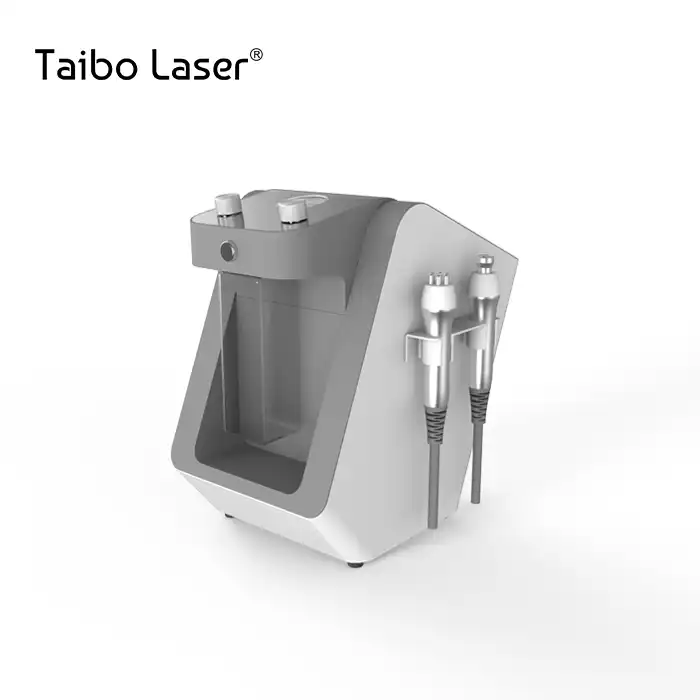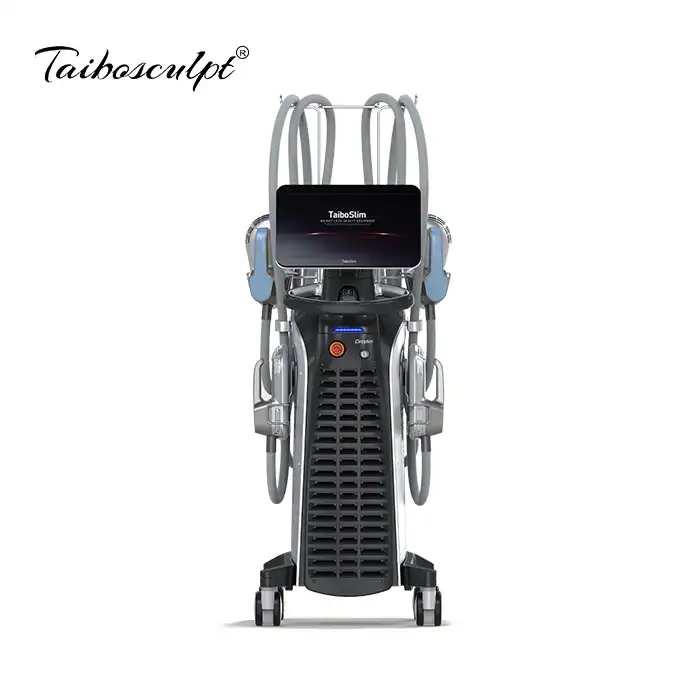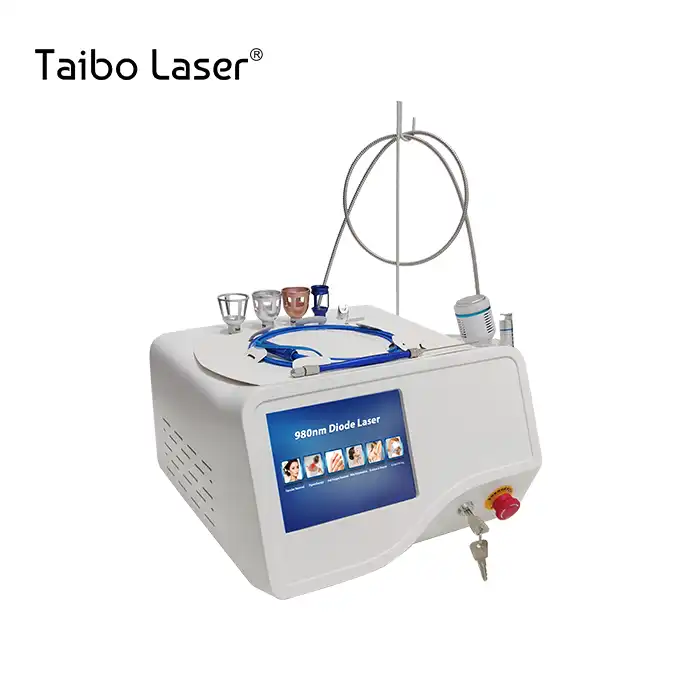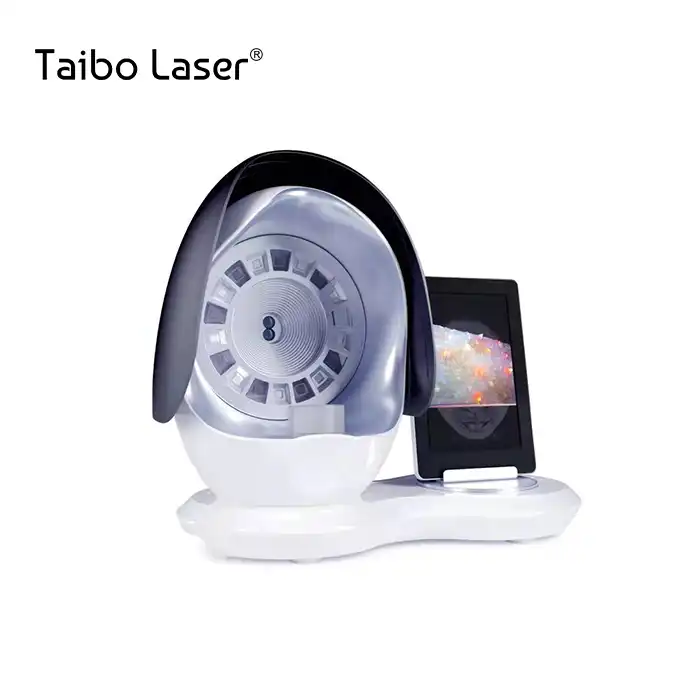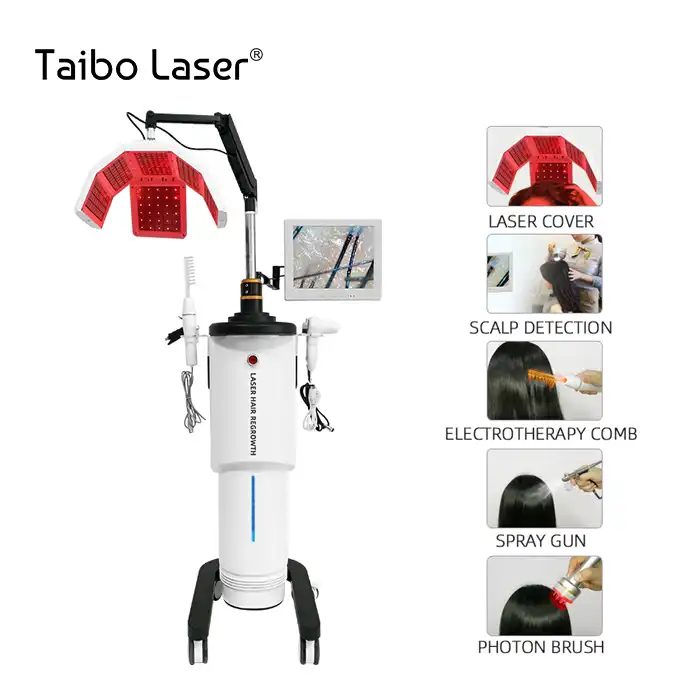
5 Reasons Picosecond Q-Switch Lasers Outperform Traditional Options
2025-09-10 09:12:17
The aesthetic medicine industry has witnessed revolutionary advancements in laser technology, with picosecond q switch laser systems emerging as game-changing solutions that significantly surpass traditional laser options. These ultra-advanced systems deliver unprecedented precision and effectiveness in treating various skin conditions, from tattoo removal to pigmentation disorders. A Picosecond laser operates at one trillionth of a second, and has a pulse width that is 100 times faster than that of the Q-Switched laser. Understanding why picosecond q switch laser technology represents such a substantial improvement over conventional methods is crucial for practitioners and patients seeking optimal treatment outcomes with minimal downtime and enhanced safety profiles.
Superior Pulse Duration Technology Creates Unmatched Treatment Precision
The fundamental advantage of picosecond q switch laser technology lies in its revolutionary pulse duration capabilities that operate at trillionths of a second. This ultra-short pulse duration represents a quantum leap forward from traditional nanosecond lasers, enabling practitioners to achieve unprecedented precision in targeting specific skin structures without causing thermal damage to surrounding tissues. The picosecond q switch laser generates photomechanical effects rather than photothermal effects, which means the energy is delivered so rapidly that heat generation is minimized, resulting in significantly reduced risk of post-inflammatory hyperpigmentation and scarring. This advanced mechanism allows for more aggressive treatment parameters while maintaining exceptional safety standards, particularly crucial when treating sensitive areas or patients with darker skin types. The ultra-fast pulse delivery of picosecond q switch laser systems creates a photoacoustic effect that shatters target chromophores into microscopic particles through sheer mechanical force rather than heat-based destruction. This precise targeting capability enables practitioners to address even the most stubborn pigmentation issues and multicolored tattoos that traditionally required multiple laser types or proved resistant to conventional treatment approaches. The enhanced precision also translates to more predictable treatment outcomes, allowing practitioners to establish realistic patient expectations and treatment protocols with greater confidence in achieving desired results.
Enhanced Pigment Fragmentation Delivers Faster Treatment Results
Due to its ultra-fast pulse duration, Pico Lasers can break down ink particles into even smaller fragments than the Q-Switched YAG laser. This results in a more effective and quicker removal process, requiring fewer sessions to achieve optimal results. The picosecond q switch laser technology excels in fragmenting pigments and tattoo inks into particles so small that the body's lymphatic system can eliminate them more efficiently than ever before. Traditional Q-switched lasers typically break pigments into particles measuring several hundred nanometers, while picosecond systems can reduce these particles to sizes as small as 10-40 nanometers. This dramatic reduction in particle size directly correlates to faster clearance rates and fewer required treatment sessions. Patients typically experience visible improvement after just one to two sessions with picosecond q switch laser treatments, compared to the four to six sessions often required with traditional systems. The enhanced fragmentation capability also extends to previously challenging pigment colors, including green, blue, and purple inks that historically required specialized wavelengths or proved completely resistant to removal. The picosecond technology's ability to target these difficult chromophores has revolutionized treatment possibilities for patients with complex, multicolored tattoos. Furthermore, the superior fragmentation achieved by picosecond q switch laser systems results in more uniform treatment outcomes across different skin types and pigmentation patterns. This consistency allows practitioners to develop standardized treatment protocols that deliver predictable results regardless of patient demographics or specific presentation characteristics, significantly improving clinical efficiency and patient satisfaction rates.

Multiple Wavelength Options Provide Comprehensive Treatment Versatility
Modern picosecond q switch laser systems typically incorporate multiple wavelengths, including 532nm, 755nm, and 1064nm, providing practitioners with unprecedented versatility in addressing diverse aesthetic concerns within a single platform. The 1064nm wavelength proves exceptionally effective for treating deeper pigmentation issues and black tattoo inks, while the 532nm wavelength targets superficial pigmentation, red inks, and vascular lesions with remarkable precision. The 755nm wavelength specifically targets blue and green pigments that traditionally challenged conventional laser systems. This multi-wavelength capability of picosecond q switch laser technology eliminates the need for multiple laser systems in clinical practice, providing significant cost savings and operational efficiency improvements. Practitioners can customize treatment parameters for each patient's specific needs, switching between wavelengths during the same session to address multiple concerns simultaneously. This flexibility particularly benefits patients with complex presentations requiring comprehensive skin rejuvenation approaches. The wavelength versatility also extends treatment possibilities to include skin rejuvenation applications beyond pigment removal. The picosecond q switch laser can stimulate collagen production and improve skin texture through controlled dermal injury, providing anti-aging benefits alongside pigmentation correction. This dual-action capability makes the technology particularly attractive for patients seeking comprehensive facial rejuvenation with minimal downtime and maximum comfort. The energy output specifications of advanced picosecond q switch laser systems, ranging from 100-2000mJ across different wavelengths, provide practitioners with precise control over treatment intensity. This variable energy delivery ensures optimal treatment outcomes while maintaining safety standards across diverse patient populations and treatment indications.
Reduced Treatment Discomfort Improves Patient Experience
Patient comfort represents a critical factor in treatment success and compliance, and picosecond q switch laser technology delivers significant improvements in this area compared to traditional laser systems. The picosecond lasers are so fast that it breaks up the tattoo ink particles into fine dust and it allows our body to absorb the ink quicker, easier and more effective. The ultra-short pulse duration minimizes thermal buildup in treated tissues, resulting in substantially reduced pain and discomfort during treatment sessions. Traditional Q-switched lasers often produce significant thermal effects that patients describe as similar to hot rubber band snaps against the skin, frequently requiring topical anesthetics or cooling systems to manage discomfort. In contrast, picosecond q switch laser treatments typically generate only mild discomfort that most patients tolerate easily without additional pain management interventions. This improved comfort profile enhances treatment compliance and allows for more aggressive treatment parameters when necessary. The reduced discomfort associated with picosecond q switch laser treatments also translates to faster treatment sessions and improved clinical efficiency. Patients experience minimal downtime following treatments, with most individuals returning to normal activities immediately post-procedure. The gentle nature of picosecond technology particularly benefits patients with sensitive skin or those requiring treatment in delicate areas where comfort considerations are paramount. Additionally, the decreased thermal impact results in minimal post-treatment erythema and swelling, allowing patients to schedule treatments with greater flexibility and confidence in their social and professional commitments. This improved patient experience directly contributes to higher satisfaction rates and increased referral generation for practices offering picosecond q switch laser services.
Advanced Safety Profile Minimizes Complications and Side Effects
The superior safety profile of picosecond q switch laser technology represents perhaps its most significant advantage over traditional laser systems. The ultra-short pulse duration and photomechanical action mechanism significantly reduce the risk of thermal injury, post-inflammatory hyperpigmentation, and scarring compared to conventional Q-switched systems. This enhanced safety profile makes picosecond treatments suitable for a broader range of patients, including those with darker skin types who traditionally faced higher complication risks with laser treatments. Clinical studies consistently demonstrate lower incidence rates of adverse effects with picosecond q switch laser treatments compared to traditional systems. The reduced thermal impact minimizes disruption to surrounding tissues, resulting in faster healing times and fewer post-treatment complications. This safety advantage particularly benefits practitioners treating challenging cases or patients with complex medical histories where minimizing risk is paramount. The advanced cooling systems integrated into modern picosecond q switch laser platforms, typically combining air and water cooling mechanisms, further enhance patient safety by maintaining optimal tissue temperatures throughout treatment sessions. These sophisticated thermal management systems ensure consistent energy delivery while preventing overheating that could compromise treatment outcomes or patient safety. The comprehensive safety features of picosecond q switch laser systems, including built-in monitoring capabilities and automatic safety shut-offs, provide practitioners with confidence in delivering effective treatments while maintaining the highest safety standards. The self-inspection functions with over 30 built-in monitoring points ensure optimal system performance and early detection of any potential issues that could affect treatment safety or efficacy.
Conclusion
Picosecond q switch laser technology represents a paradigm shift in aesthetic medicine, offering superior treatment outcomes through advanced pulse duration technology, enhanced pigment fragmentation, versatile wavelength options, improved patient comfort, and exceptional safety profiles. These five key advantages demonstrate why picosecond systems consistently outperform traditional laser options across multiple treatment applications and patient populations.
Ready to revolutionize your practice with cutting-edge picosecond q switch laser technology? Xi'an Taibo Laser Beauty Company stands as a leading China picosecond q switch laser manufacturer with over 15 years of expertise in developing advanced laser solutions. As a trusted China picosecond q switch laser supplier, we offer comprehensive picosecond q switch laser for sale with competitive picosecond q switch laser price options to meet diverse clinical needs. Our position as a premier China picosecond q switch laser factory ensures reliable quality and innovative features backed by CE and ISO13485 certifications. Whether you're seeking China picosecond q switch laser wholesale opportunities or individual equipment purchases, our expert team provides customized solutions, comprehensive training, and ongoing support to maximize your investment. Contact us today at susan@taibobeauty.com to discover how our advanced picosecond q switch laser systems can transform your practice and deliver exceptional results for your patients.
References
1. Byun, S. J., Kim, W. S., & Choi, Y. J. (2024). Comparison of the picosecond and Q-switched Nd:YAG lasers in the treatment of pigmentary disorders: a retrospective case series. Medical Lasers, 13, 25-34.
2. Anderson, R. R., & Parrish, J. A. (1983). Selective photothermolysis: precise microsurgery by selective absorption of pulsed radiation. Science, 220(4596), 524-527.
3. Herd, R. M., Dover, J. S., & Arndt, K. A. (1997). Basic laser principles. Dermatologic Clinics, 15(3), 355-372.
4. Ross, E. V., Yashar, S., Naseef, G. S., Barnette, D. J., Skrobal, M., Grevelink, J., & Anderson, R. R. (1998). A pilot study of the effect of pulse duration on the effectiveness of tattoo removal using the Q-switched Nd:YAG laser. Dermatologic Surgery, 24(8), 841-845.
YOU MAY LIKE













